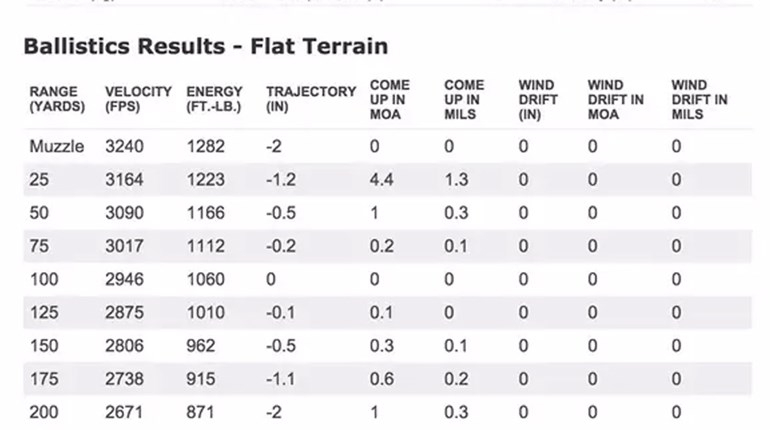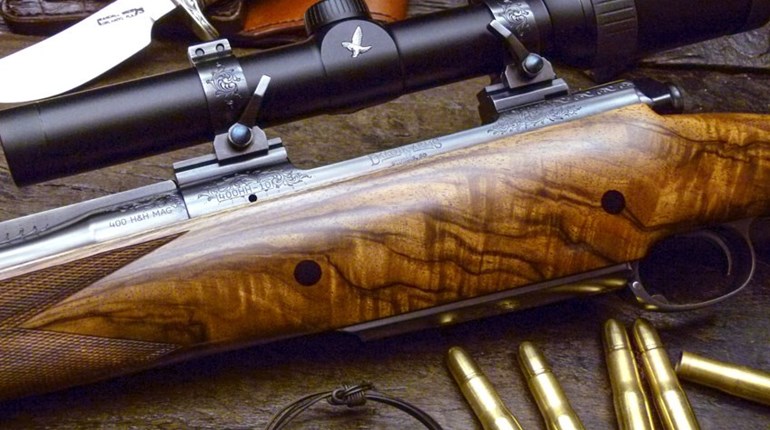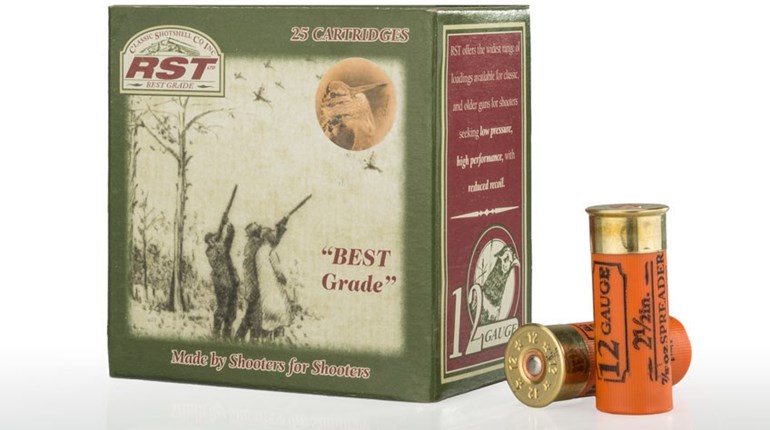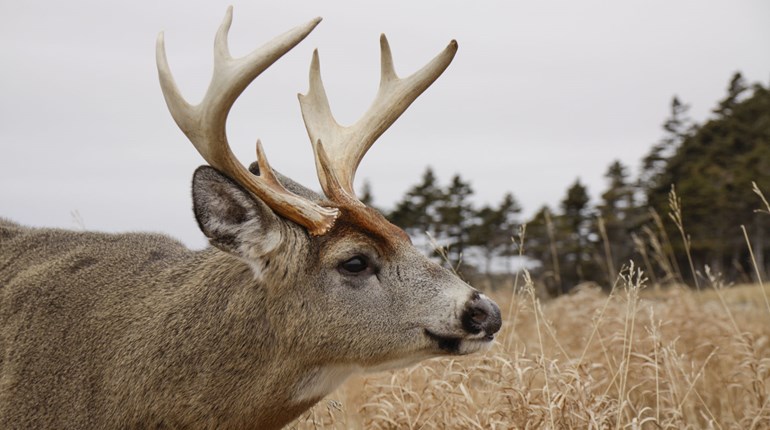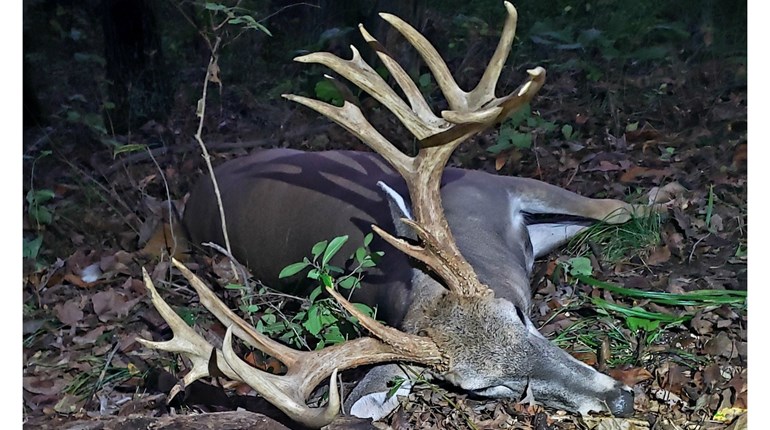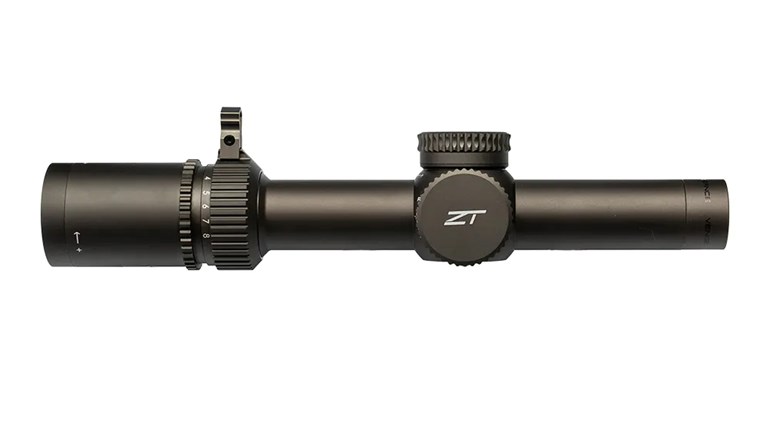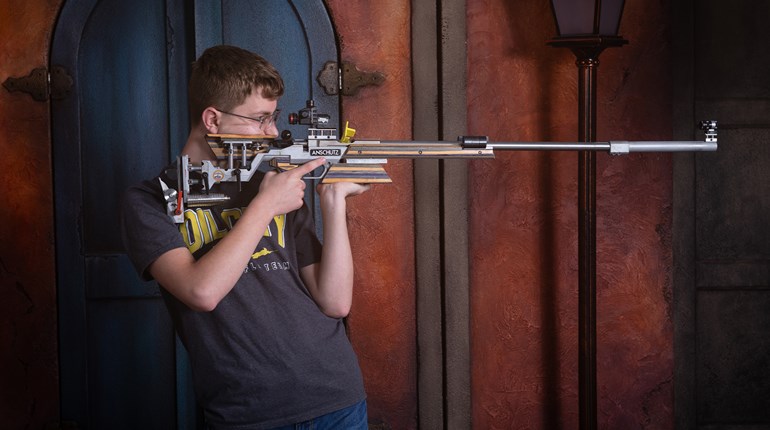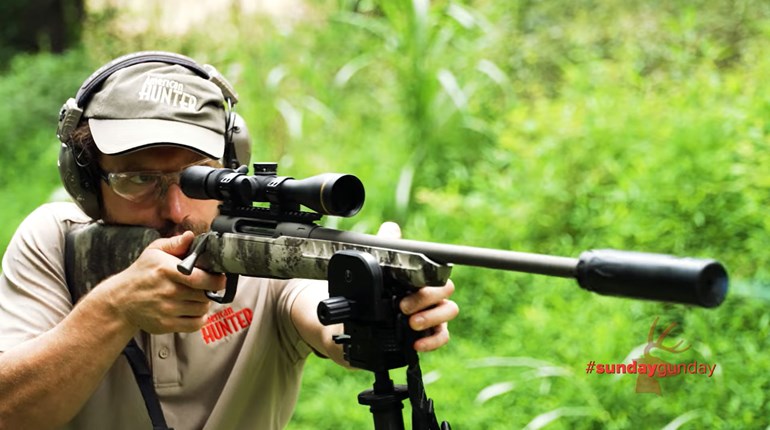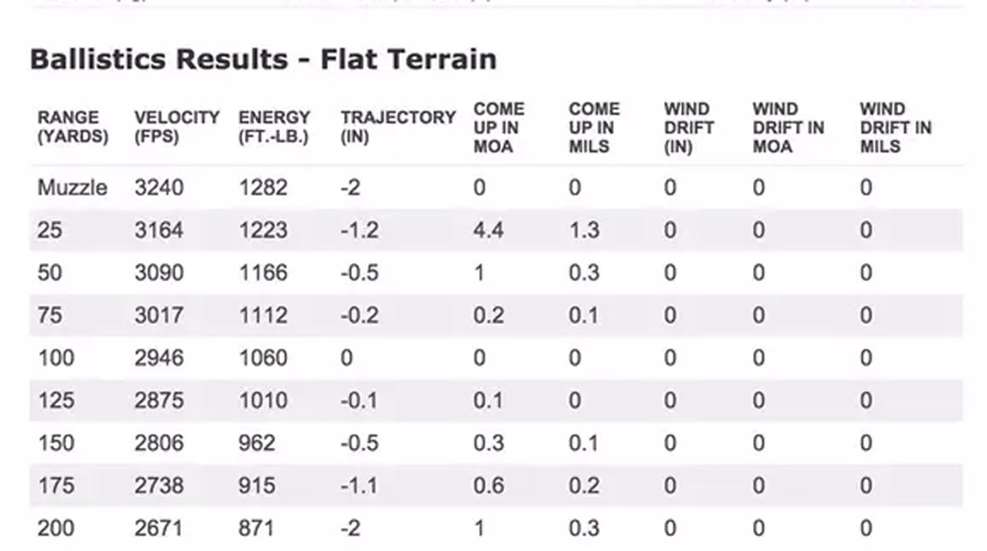
Do not be intimidated by the ballistics tables published by bullet and ammunition manufacturers. Ballistics tables are the result of sophisticated measurements and calculations specifically designed to help you get the maximum performance from your firearms. On a practical level, ballistics tables provide information that enables you to:
- select the most efficient bullet and cartridge combination by comparing trajectories and downrange remaining velocity and energy levels;
- zero your rifle for short or long range;
- determine precisely how much to hold off for shots at long or short ranges and/or uphill or downhill;
- predict the effect crosswinds will have on bullet impact; and
- determine the striking energy your bullet will have at normal ranges.
A typical ballistics chart will include the following information for a given caliber and bullet combination:
- Caliber, bullet weight and style: This information identifies the actual bullet weight in grains or grams, the bullet style (i.e., spitzer, soft-point, boattail, etc.) and specific cartridge.
- Barrel length from which test data was calculated: Normally, test barrels are 24 inches long. However, your rifle may have a longer or shorter barrel. This can be important, as barrel length affects muzzle velocity.
- Remaining velocity of the bullet at selected ranges in feet per second (f.p.s.): Remaining velocity numbers indicate the aerodynamic efficiency of a bullet. Higher retained velocity means a bullet is more efficient at slicing through the air.
- Remaining (striking) energy of the bullet at the same selected ranges, expressed in foot-pounds (ft.-lbs.) of energy: Higher remaining velocity translates in turn into greater retained striking energy. This is an important number to use in matching the efficiency of your bullet to the game hunted. Selecting the most efficient bullet of suitable weight in a specific caliber will result in maximum striking energy.
- Expected bullet drift (displacement) in a 10-mph crosswind at selected ranges, expressed in inches: Experienced hunters and target shooters know that the wind must always be taken into consideration before firing a shot. At long ranges, crosswinds will dramatically affect a bullet's impact point. At shorter ranges, wind drift may not be a significant factor. Ballistic charts tell you exactly how much the wind will affect your shot at various ranges. Deflection values for 10-mph crosswinds are normally listed, as other crosswind velocities are proportional. In other words, if a 10-mph crosswind deflects a bullet 1 inch at 100 yards, a 20-mph crosswind will deflect it about 2 inches; a 5-mph crosswind only about half an inch.
- Bullet path or trajectory when zeroed at 100 yards and 200 yards: This useful information should be memorized or written on a piece of tape attached to your rifle stock. Basically, the figures tell you how much above or below the line of sight the bullet will strike at a given range based on the rifles's zero. This is very useful in determining where to hold at a given distance for long-range shots.
Shooters often want to know the exact trajectory of a particular bullet, fired at a specific muzzle velocity they have determined using a chronograph. These figures can be calculated using a modern ballistic computer program or app.













